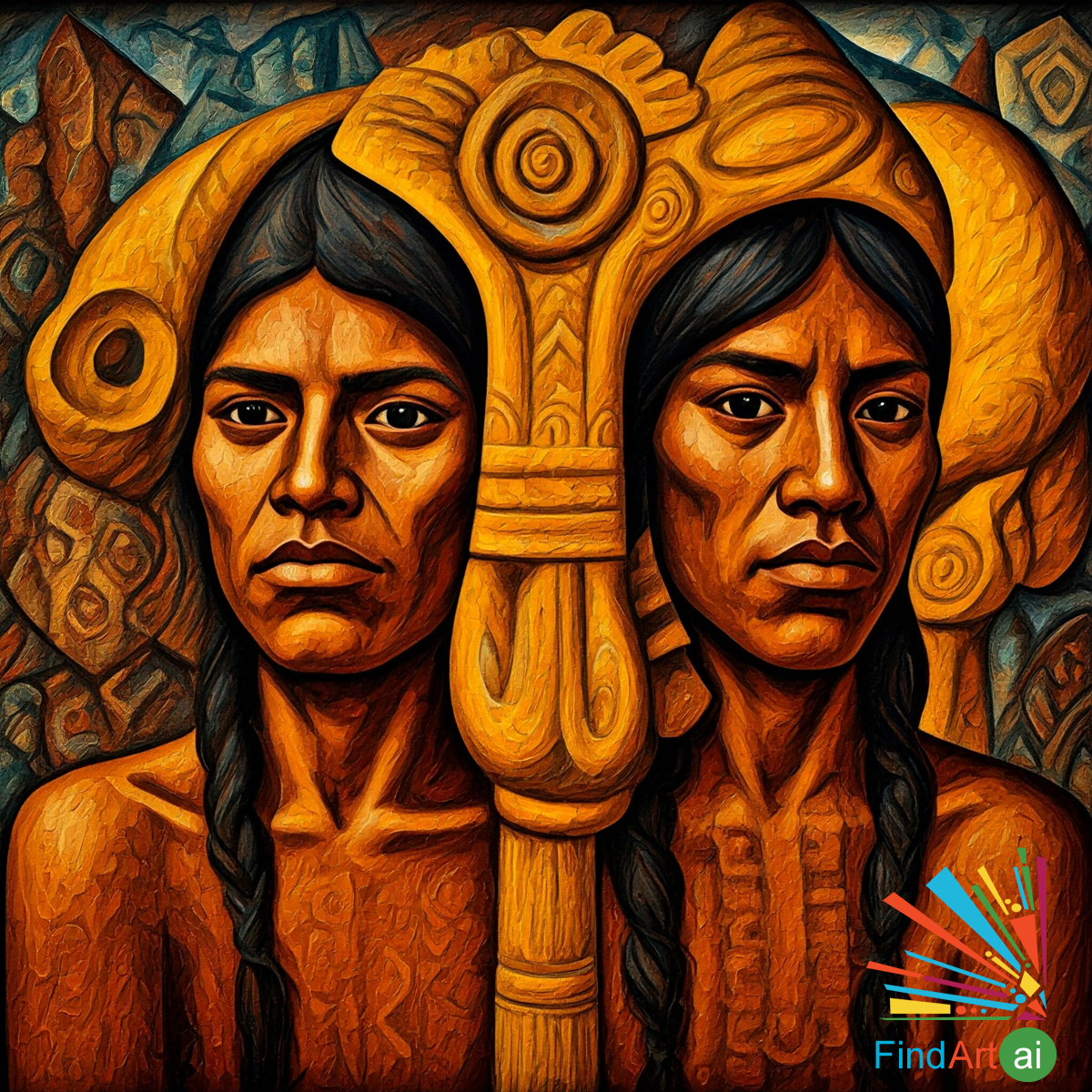Mexican Muralism
Mexican Muralism is a prominent art movement that emerged in the early 20th century, characterized by large-scale murals that reflect social, political, and cultural themes. This movement was notably influenced by the Mexican Revolution (1910-1920) and sought to address issues of identity, inequality, and national pride.
Key Characteristics of Mexican Muralism
- Large Scale
- Murals are typically vast, often covering entire walls or buildings. This scale allows artists to convey complex narratives and engage with a wide audience.
- Social and Political Themes
- The murals often depict social injustices, the struggles of the working class, indigenous rights, and national identity. They serve as visual commentaries on the political and social issues of the time.
- Example: Murals by artists like Diego Rivera often illustrate the plight of the peasantry and workers, emphasizing themes of revolution and unity.
- Use of Symbolism
- Mexican Muralism employs rich symbolism to convey deeper meanings. Artists use imagery from Mexican history, folklore, and indigenous culture to represent themes of resistance, heritage, and hope.
- Incorporation of Indigenous Culture
- The movement sought to reclaim and celebrate indigenous heritage, integrating elements of pre-Columbian art and culture into the murals. This focus on indigenous identity is a hallmark of the movement.
- Narrative Style
- Murals often tell stories, using a sequential style to guide viewers through historical events, cultural narratives, and personal stories. The use of figures, scenes, and landscapes creates a dynamic storytelling experience.
- Bold Colors and Forms
- The artworks are characterized by vibrant colors and strong forms, creating visually striking images that capture attention and convey emotion. The use of tempera and fresco techniques enhances the luminosity and durability of the murals.
- Community Engagement
- Many murals were created in public spaces, making art accessible to the broader community. This emphasis on public art reflects a desire to educate and inspire social change among the populace.
Common Themes in Mexican Muralism
- Revolution and Social Justice: The portrayal of the struggles and aspirations of the working class and indigenous people, often celebrating revolutionary ideals.
- Historical Narratives: Murals depict significant events in Mexican history, such as the Spanish conquest, the Mexican Revolution, and the fight for independence.
- Cultural Identity: Emphasis on Mexican identity, blending indigenous and mestizo elements to create a unified national culture.
- Education and Empowerment: Many murals aim to educate the public about their rights, history, and the importance of community solidarity.
Famous Mexican Muralists
- Diego Rivera
- One of the most famous muralists, Rivera’s works, such as those in the National Palace in Mexico City, depict the struggles of the Mexican people and celebrate indigenous culture.
- David Alfaro Siqueiros
- Known for his dramatic compositions and innovative techniques, Siqueiros’ murals often focus on themes of social revolution and human struggle.
- José Clemente Orozco
- Orozco’s murals, such as those at Hospicio Cabañas in Guadalajara, explore themes of human suffering and the complexities of the human condition, often incorporating a more somber tone.
- Rufino Tamayo
- Although less focused on political themes, Tamayo's murals blend indigenous motifs with modernist elements, contributing to the overall richness of the muralism movement.
Mexican Muralism is a powerful artistic movement that combines large-scale visual storytelling with deep social and political commentary. Through its vibrant imagery and themes of justice, identity, and history, this movement not only transformed public spaces in Mexico but also left a lasting legacy in the world of art, influencing generations of artists and activists.
Mexican Muralism Paintings with Cultural Identity Theme
Mexican Muralism with the Cultural Identity theme is a powerful artistic movement that celebrates th...

